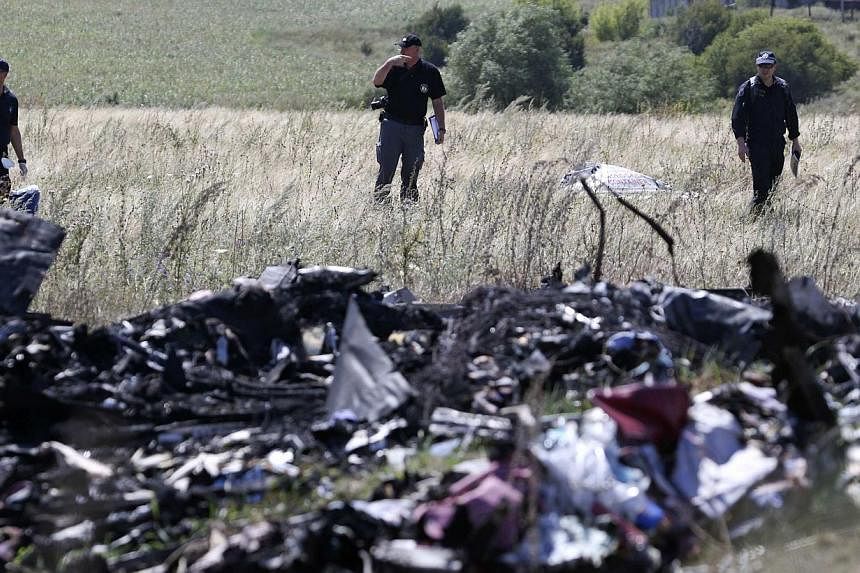Malaysia Airlines flight MH17 crashed on July 17 in pro-Russia separatist-held territory in eastern Ukraine while travelling from Amsterdam to Kuala Lumpur. All 298 people on board were killed. A preliminary report on Sept 9 by the Dutch Safety Board said the aircraft was hit by numerous "high-energy objects". The finding could back up claims that the plane was shot down by a missile, although the report did not apportion blame. Here are the main points of the report:
1. Flight MH17 hit by high-energy objects
The damage to the Boeing 777 forward fuselage and cockpit section appears to "indicate that there were impacts from a large number of high-energy objects from outside". The observation was made based on pictures taken of parts of the wreckage which shows "multiple holes and indentations".
2. The plane broke up in mid-air
The wreckage on the ground "suggests that the aircraft split into pieces during the flight" as a result of being hit by the high-energy objects. The wreckage was found over a large area of 10km by 5km, with satellite images supporting the finding. The report said pieces of the forward part of the plane was found closest to the last registration of the flight data recorder, "indicating that these parts broke off from the aircraft first".
3. Plane was airworthy
Built in 1997, the Boeing 777 "was in an airworthy condition at departure, there were no technical malfunctions". The last maintenance check of the plane was done in April.
4. Experienced crew not at fault
Both captains on flight MH17 had over 10,000 flying hours, of which more than 7,000 hours were on the Boeing 777. Both First Officers had more than 3,000 flying hours, of which a little over 200 hours were in this type of aircraft. "There are no indications that the MH17 crash was caused by a technical fault or actions of the crew," the report said.
5. Flight proceeded as normal, no distress call
Flight MH17 was flying in unrestricted airspace on a constant heading when its crashed."No aural warnings or alerts of aircraft systems malfunctions were heard on the cockpit voice recording, which ended at 1.20pm GMT," said the report. "Crew communication gave no indication that there was anything abnormal with the flight. No distress messages were received by ATC (air traffic controller)."
6. Black boxes not tampered with
The aircraft's black boxes were taken by unknown individuals. Separatists who controlled the area handed them over to a Malaysian official. The black boxes were taken to the Air Accidents Investigation Branch in Farnborough in Britain. "No evidence or indications of manipulation of the recorders were found."
7. Further investigation needed
"The initial results of the investigation point towards an external cause of the MH17 crash," said Mr Tjibbe Joustra, chairman of the Dutch Safety Board. "More research will be necessary to determine the cause with greater precision," he added. The board aimed to publish a final report within a year of the date of the crash.
SOURCE: AFP

